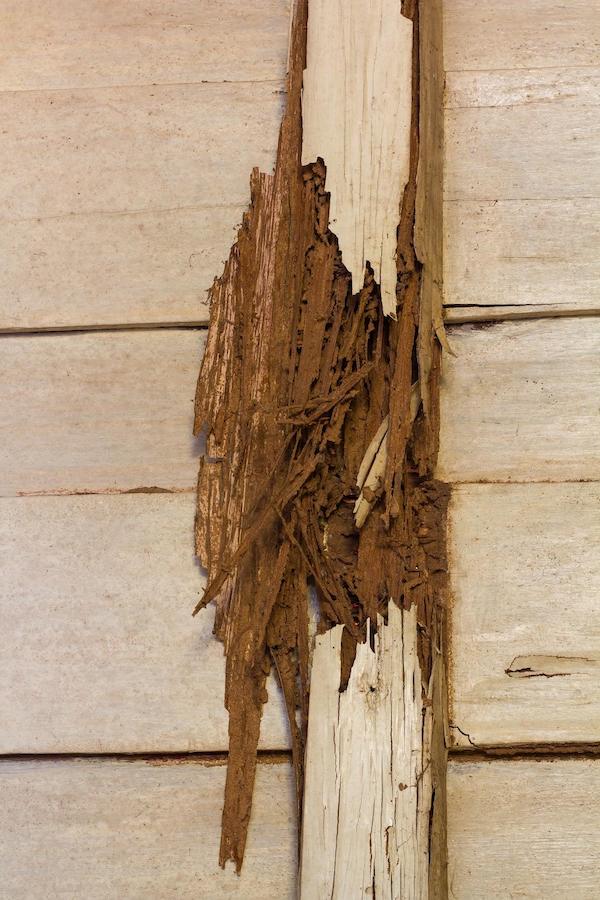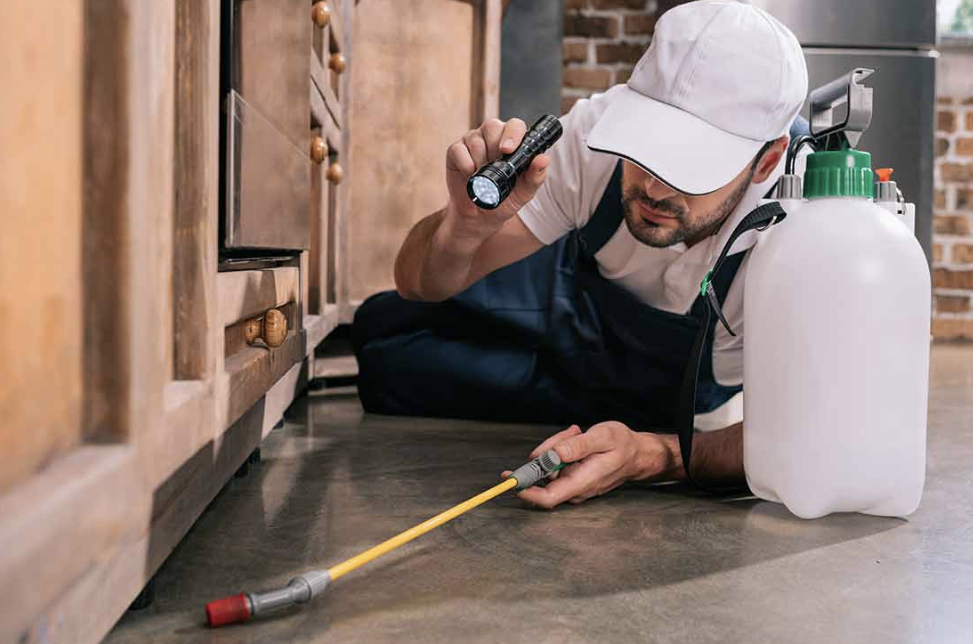
Spring is a time of renewal, growth, and change, with warmer weather pushing aside the winter chill and frequent rains encouraging plants to grow. It’s the time of year where bluebonnets bloom, young animals explore and scamper across yards, and bugs of all sorts begin to flourish. For many pests, April will just barely start their prolific season; however, for a few notable pests this is the month where conditions are perfect and they thrive above all others. The most notorious of these April-loving pests are termites and carpenter ants.
It’s during this month that you will see swarmers (winged versions) of both of these pests leaving their nests en masse in order to mate and begin a new colony. To the casual observer, it can be difficult to tell the difference between a termite and a carpenter ant, especially since both are wood-destroying pests, prefer similar habitats, and send swarmers out at the same time of year; however, termites pose considerably more danger to the structure of your home and require more extensive and expeditious treatment than do carpenter ants, which is why being able to tell the difference between the two is so important.
So how do you correctly identify a termite from a carpenter ant and why is one so much more concerning than the other? The answers can be found in both the visual and behavioral differences between these pests.

What are the Visual Differences Between Termites and Carpenter Ants?
When discussing visual differences, it’s important to distinguish whether you are looking at the swarmers, workers, or soldiers of the species, as they all have unique characteristics that will help you tell which species you are looking at.
Swarmers: These are by far the most common type you will encounter, and are especially prevalent in spring. Swarmers are simply winged termites or ants that are setting out to reproduce and create a new colony. They tend to emerge in large numbers once the existing colony has grown quite large, and they can generally be found heading toward windows in their attempt to get outside to propagate.
| Termite Swarmers | Carpenter Ant Swarmers |
| Fairly uniform body width | Segmented body with narrow waist |
| Straight, short antennae | Segmented, bent antennae |
| 2 sets of uniform wings | Front wings longer than hind wings |
| Wings are much longer than body | Wings similar size as body |
| Wings are clear or white and are fragile and easily fall off | Wings are semi-transparent yellowish-brown |
| Body is black | Body is black or red and black |
| 3/8” long including wings | 3/4” long |
Workers: You are unlikely to encounter workers of either species unless their nest has been disturbed. They tend to stay fully within their colony and are responsible for providing food and building/maintaining the colony.
| Termite Workers | Carpenter Ant Workers |
| 1/8” long body | 3/8” long body |
| Translucent cream-colored | Black or red and black |
| Soft-bodied | Hard, segmented body |
Soldiers: As their name suggests, these insects are responsible for defending the colony, and as such can occasionally be seen outside the hive.
| Termite Soldiers | Carpenter Ant Soldiers |
| Large, rectangular, orange/brown head with powerful jaw and pincers | Segmented body with bent antennae |
| Light-colored body | Black or red and black |
| A bit bigger than workers | 1/2” long body |

What are the Behavioral Differences Between Termites and Carpenter Ants?
Though both termites and carpenter ants are drawn to damp, rotting wood, and do damage to wooden structures, the similarities in their habits largely ends there. These two insects have a different diet, different ways of building nests, and different telltale signs of an infestation.
Diet: Perhaps the biggest behavioral difference between termites and carpenter ants is their diet. Termites feed upon dead plant material and cellulose, which means that they are literally eating the wood in your home for their meals. Carpenter ants, however, do not eat cellulose, instead they mostly consume protein (i.e. insects) and sugars. This difference illustrates the primary reason why termites are so much more destructive to wooden structures: since it is literally consuming the wood as food, the more termites there are, the more they will eat.
Nests: So if carpenter ants don’t eat wood, why are they doing so much damage to it? Put simply, they are merely excavating sections of the wood in which to build their nests. Because carpenter ants are only using the wood for their nests, it will take them longer to do severe damage, as they will only excavate tunnels and galleries in the wood when needed for growth. Additionally, their tunnels and galleries are very neat and smooth, unlike those created by termites, which tend to be rough, ragged, and filled with layers of soil and mud. The reason there is soil and mud left by termites is due to their subterranean nesting. Though termites can create satellite nests within your home, they generally have their primary nest underground, and come into your home to feast on the wood there.
Telltale Signs: Because termites live mostly underground and come into a home to eat, they need a safe way to travel between their nest and their food, which is why they build mud tubes. Mud tubes are the highway termites use to safely traverse exposed areas (generally against the foundation of a home) and are the primary sign that you have a termite infestation. On the other hand, carpenter ants, which live in the wood itself, do not need external methods of travel; what they do need is space, which is why they expel wood shavings and waste out of the nests. This expelled material is called frass and can generally be found at baseboards and windowsills, this is a sure indicator that carpenter ants have infested your home.

Whether you are seeing the signs of a termite or carpenter ant infestation, it’s important to take immediate action and call The Bug Dude @ 800-310-BUGS to assess the situation and get it properly treated. The technicians at Mid-Cities Pest Control are dedicated to helping you quickly eliminate the infestation and get back to enjoying your home without the stress and worry of insect damage. So give The Bug Dude a call at 1-800-310-BUGS and reclaim your spring.
Further Reading:
The Truth about Five Common Termite Myths
Spring, and Carpenter Ants, are in the Air
Author Bio: Alissa Breach has been gaining knowledge and experience around pest control concerns over the last 11 years while working for Mid-Cities Pest Control. She has a creative writing BA from UW-Madison and is always pursuing new and interesting writing projects.




